New Documentaries Explore Censorship and Suppression of History in Israel
“A Reel War: Shalaal” and “The Soldier’s Opinion” expose the realities of Israel’s “nation-building.”
By Marcia G Yerman , TRUTHOUT
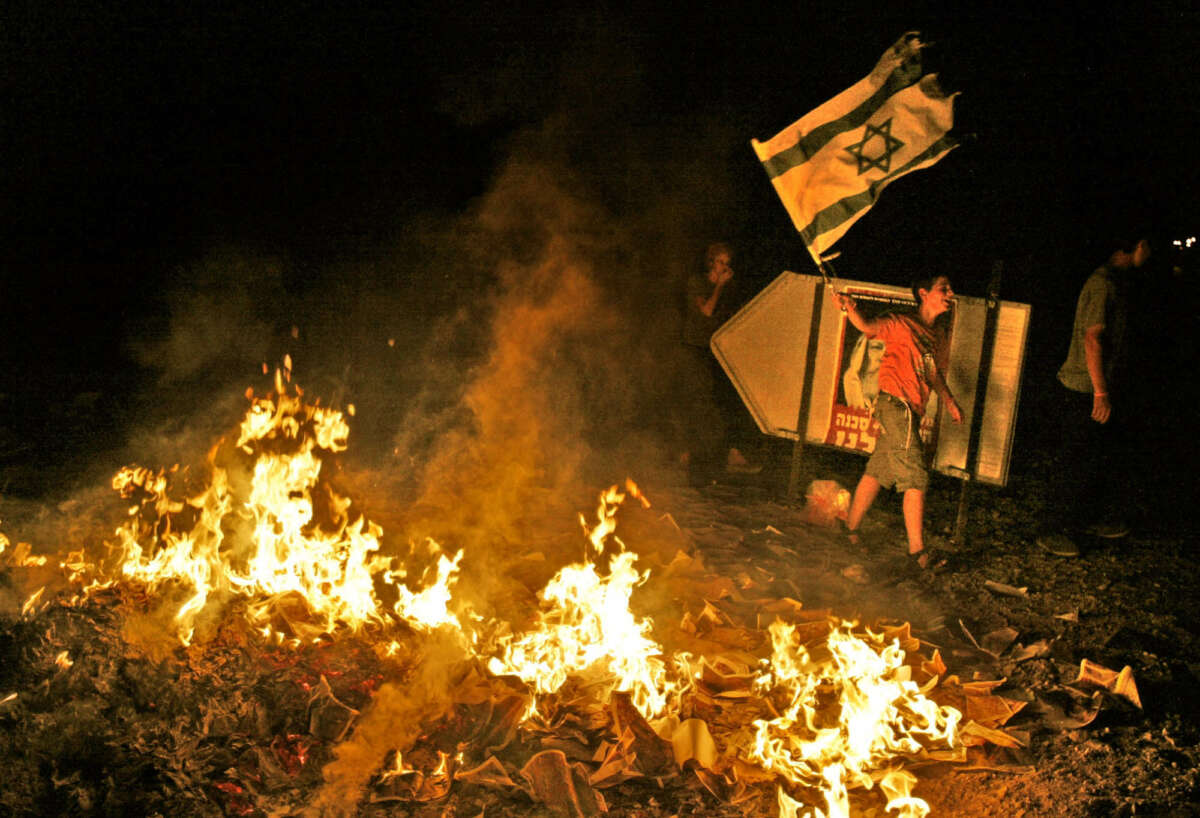
Two movies screened at the most recent the Other Israel Film Festival examined the theft of collective and personal histories from Palestinians and Israelis by the Israeli government and its military machine.
The documentaries by these two filmmakers have the explicit goal of questioning the legacy histories put into play by the Israeli government and hasbara proponents. Following in the footsteps of the Israeli New Historians, directors Karnit Mandel and Assaf Banitt have endeavored to show the Israeli public the realities of “nation-building.”
A Reel War: Shalaal is directed by Mandel, a researcher in the Israeli film and television industry archives who uncovers unidentified raw footage labeled as “IDF and Defense Establishment Archives.” The reels were found in the Palestine Liberation Organization (PLO) Beirut archive. Thus begins Mandel’s quest to learn more about the history of the material she has happened upon and its backstory.
Mordechai Bar-On, a historian, looks at images of Palestinian families working and suggests the timeline is the 1930s, concurrent with when Palestinian cinema began. Professor Mustafa Kabha identifies the imagery capturing daily life inside the home and at the market, constructing a visual history of Palestinian existence. Palestinian director Sabri Jaresh immediately recognized images as he reviewed them. Jaresh acknowledged they were in an Israeli archive because during the 1982 war in Lebanon, Israelis took “truckloads” of filmstock from the Institute for Palestinian Studies (an academic branch of the PLO founded in 1965). “That was my work,” he said.
Anan Barakat, a Palestinian director and film critic observing Palestinian schoolgirls in crisp uniforms, pegs the footage as before 1964. “When you pick up a camera and use it to document, you start feeling that you’re free. That you have power,” Barakat said.
RELATED STORY
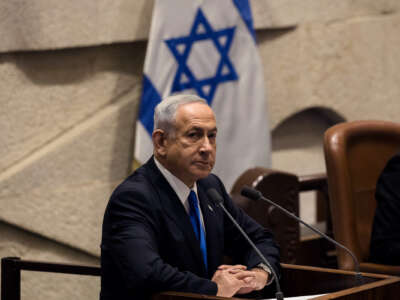
Netanyahu Ushers in the Most Anti-Palestinian Government in Israel’s History
The new government will annex the West Bank, expand illegal Jewish settlements and discriminate against LGBTQ people.
By Marjorie Cohn , TRUTHOUT
The flip side is a consciously filtered memory initiated by the state. “The historical memory of my generation consists of a collection of visual images, frames from movies, newspapers, TV news,” Mandel remarks in A Reel War. “What we saw in the pictures happened. What we didn’t see never happened.”
In her efforts to get “special permission” from the Israeli government to see more footage, Mandel was up against a formidable adversary. She filed innumerable written requests because everything was classified. Any release was subject to approval. Repeated phone calls to the head of the Israel Defense Forces (IDF) archive, Ilana Alon, went unanswered.
There is a condescending tone in much of the commentary by Israeli participants. Col. Dr. Barry Michelson, a military historian and intelligence officer, opines about PLO history. “I want to remind you,” he tells Mandel, “There were no Palestinians in ’64. That concept was invented later.” When pressed by Mandel, he announces flatly, “Any spoils of war belong to the IDF.”
“Operation Karameh,” which Sabri Jiryis stated, “Marked the beginning of the [Palestinian] face-to-face fight against Israel,” exemplifies this concept. It took place eight months after the 1967 war. Prime Minister Levi Eshkol prohibited reporting on the operation in real time, and the complete story was not disclosed until 1984. Mandel kept digging and found the Al Baqa’a refugee camp 80 kilometers northeast of Karameh, from which residents fled in March 1968.
When Alon finally responds to Mandel’s inquiries, she informs her that the Palestinian reels were “given back [to Israel] as part of the Oslo Accords agreement.” Alon references suggestions to the contrary as “some kind of urban myth.” Unwilling to accept that at face value, Mandel contacts a chief Israeli negotiator from Oslo to get a clear answer. The answer comes back as an unequivocal, “Million percent. No.”
Color shots of Palestinian mothers attending infant care classes and pre-state footage of Jaffa, where citrus exports were a key component of Palestinian industry, tell part of a story.
Jiryis, watching footage from a decade before 1948, reflects on how this material forms “memory.” Is there an Israeli effort to create a “collective amnesia” for the Palestinian people to deny them a record of their cultural and political legacy? Atef Soura, a Palestinian film scholar, emphasized that, “Israelis also deserve to see it.” Professor Mustafa Kabha said, “There’s this desire to cover and erase the layers of Palestinian memory.”
While most Israeli representatives ask, “Why give it back [to Palestinians]?” others see the reality at play. Bar-On, who edited the IDF “victory albums,” admits the goal was to make the military likable to “Israelis and itself.” He says in the film, “The Arabs were not a central issue for us. They were defeated. They were deported. They were an insignificant minority.” He acknowledges, “We didn’t get all the story. There was rape, expulsions, looting.” He concluded, “We should confront the truth. We owe it to ourselves. Also, to them, even when it wasn’t pretty.”
The strongest condemnation of Israeli behavior came from Dr. Yaacov Lozowick, the state archivist during the years Mandel was doing research (2011-2018). He was unable to give interviews while serving in that post, but appeared on screen in A Reel War. He had challenged his superiors about “unopened” material for reasons that were “illegitimate in a democratic state.” Lozowick says that the role of an archive “is to show its materials to the public.” He indicated a “tiny portion” may need to remain classified, but not in the area of “historical narrative.”
In 2018, Israeli Prime Minister Benjamin Netanyahu signed an amendment to the archive law. He extended the “secrecy period” for all information in the IDF archives from 70 to 90 years. In the film, Lozowick questioned the embargo and stressed the motivation should not be “because we wish to hide part of the real story.”
Mandel asked Lozowick why he had resigned. “Because the forces committed to the status quo were much more powerful than one lone state archivist,” he responded.
The Soldier’s Opinion
The Soldier’s Opinion, directed by Assaf Banitt, presents a different but equally disturbing narrative. Again, the critical entities at play are the Israeli military and government officials. This time, they take it upon themselves to read through the personal letters of IDF soldiers under the guise of protecting national security. In reality, it’s to tap into the collective consciousness and use culled information to format a raw “database” for tracking emotions, according to the film.
The spying began in 1948 during the “War of Independence” when the defense minister wanted his “finger on the pulse” of soldiers’ attitudes; a mixture of control issues and Big Brother oversight.
Initially, there may have been a desire to oversee violence against the local population, but it morphed into monitoring combat morale, political opinions, state of mind and sexual orientation. The military postal censorship unit was comprised primarily of women. In The Soldier’s Opinion, several spoke of protecting soldiers from “hazing, rancid food and sleep deprivation.” Each censor was attached to a group, creating a “bond” with the letter writer.
There was plenty to parse. One soldier told his family, “I don’t want to die at 19.” When loneliness kicks in and a best friend dies, another man relates how his sadness has evolved into a desire for revenge. He writes, “It’s hard to describe how we turned into murderers overnight.”
Casting aside the internalized, deep-rooted self-image of the “helpless Jew,” the transformation of trauma served an important ideological role in the formation of Israeli identity. Therefore, many interviewed for the film found pride in identifying as “first-rate soldiers.” Others record their shock and disgust. A woman writes of her disbelief that a “Jewish soldier from a nice Kosher home could abuse people so horribly.” Repeatedly, the dispatches document “dismay, bitterness, disappointment and self-disgust.” They question the home front: “Where are our Jewish ethics?” They reject the motivations put forth by the Israeli government as reasons to fight.
The army constantly pushes the message, “Sacrifice your lives for the sake of the collective, the nation.” Professor Yagil Levy comments on how top echelons worked to “generate hostility” between Middle East immigrants and the Arab armies — with a focus on breaking down their identities of origin. Rather than the army functioning as an equalizer, the goal was to “Westernize” everyone. A hierarchy was in play, with Ashkenazi Jews at the top and Kurdish and Moroccan Jews at the bottom.
In 1967, with incursions into the Palestinian lands of Khan Yunis and Nablus, a dual thread of reflection emerged. Soldiers were either enamored with feeling like a “Roman conqueror … with a huge empire to rule” or were overwhelmed by the “human encounters and moral dilemmas” they faced. Several stationed in the Gaza Strip draw parallels to the history of the Jews under the Nazis.
Dr. Ze’ev Lehrer , a senior lecturer at the Peres Academic Center, discusses the contradiction between the promoted belief that the IDF is an “operation of self-defense” while “another truth is revealed.” In the film, Levy explains that the army’s goal was to squash a situation where “internal tensions and doubts found their way out.”
Millions of letters were “read, censored and classified for 50 years.” As The Soldier’s Opinion underscores, the IDF always had a concept of those serving as “their property of the state.” The aim was to foster the military mindset, not the “human point of view.”
Then-Defense Minister Yitzhak Rabin visited troops in the Occupied Territories in 1989. Although greeted with positive anecdotes, the tone was drastically different when he read their letters. Questions about the IDF’s morality were prevalent. In the words of one, “The situation makes me hate myself and the army.”
With the advent of technology, letter writing diminished. In 1998, the censorship unit was terminated. Social media posts and profiles are now “monitored, analyzed and processed” and reported to the military brass and government.
Now, with the new illiberal, right-wing Israeli government in power, the question is, are people on the ground ready to question previously accepted historical accounts?
Marcia G. Yerman, based in New York City, writes profiles, interviews, essays and articles focusing on women’s issues, human rights, the environment, politics, culture and the arts. Her work has been published by The New York Times, AlterNet, Raw Story, Women News Network and the Women’s Media Center.ST
IMMIGRATION
A Victory for Abolitionists: ICE-Run Immigration Prison Shuts Down Today
CULTURE & MEDIA
BuzzFeed’s AI-Produced Content Experiment Is a Glimpse Into a Bleak Future
ECONOMY & LABOR
Miami’s Mayor Went All In on Cryptocurrency. His Constituents Suffered.
PRISONS & POLICING
1,300 Social Justice Groups Demand Atlanta Mayor Resign Over Tortuguita’s Death
POLITICS & ELECTIONS
GOP Oversight Chair Plans to Investigate Biden’s Docs Case But Not Trump’s
PRISONS & POLICING
We Must Refuse “Normal Life” After Police Violence Like Killing of Tyre Nichols
RELATED STORIES
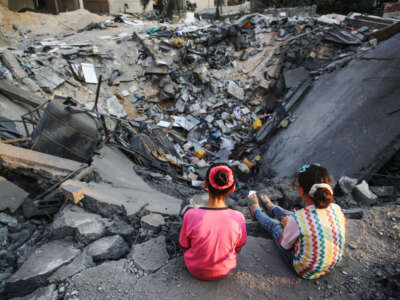
ICC Wanted to Investigate Israeli War Crimes. Now It’s Caving to US Pressure.
Two years after launching an investigation of war crimes in Palestine, the ICC is still dragging its feet.
By Marjorie Cohn , TRUTHOUT
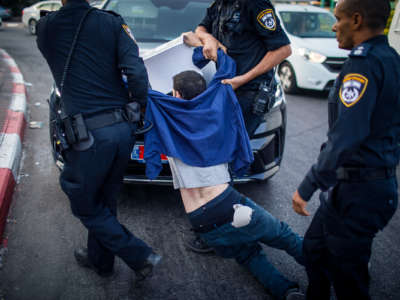
Palestinian Hunger Strikers Are Facing Harsh Retaliation Inside Israeli Prisons
Hunger strikers, including a prominent human rights attorney, demand an end to Israel’s system of arbitrary detention.
By Mike Ludwig , TRUTHOUT

Israel Authorizes Military to Kill Palestinians With Drones in the West Bank
Family of assassinated journalist Shireen Abu Akleh filed a complaint against Israeli leaders in ICC.
By Marjorie Cohn , TRUTHOUT
LATEST STORIES

BuzzFeed’s AI-Produced Content Experiment Is a Glimpse Into a Bleak Future
We can expect a media universe where a shrinking labor force is exploited to feed ChatGPT so it can churn out clickbait.
By James Steinhoff , TRUTHOUT

Twitter’s Collapse Is Bad News for Organizers – But Another Commons Is Possible
Though some things may be lost if Twitter fades, the real “magic” behind the platform was never the app, but the people.
By Meghan Krausch , TRUTHOUT

Media Literacy for Young People Is Crucial — But Rarely Taught in Schools
The newly formed Media Revolution Collective is helping youth approach media with a critical lens and spot biases.
By Peter Handel , TRUTHOUT
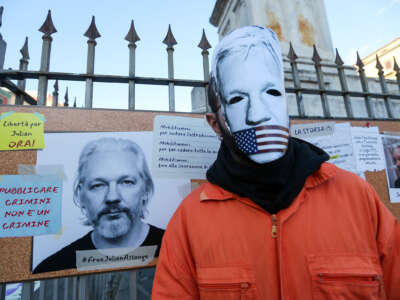
Prosecution of Assange Would Lead to End of the First Amendment, Advocates Warn
Prominent lawyers, journalists and human rights defenders say prosecuting Assange poses a grave threat to journalism.
By Marjorie Cohn , TRUTHOUT

“Thirst” Updates the Vampire Genre for Our Age of Rising Fascism
The novel offers an alternate-reality allegory about the rise of Trump and the right-wing movement that supports him.
By Bill Fletcher Jr. , TRUTHOUT
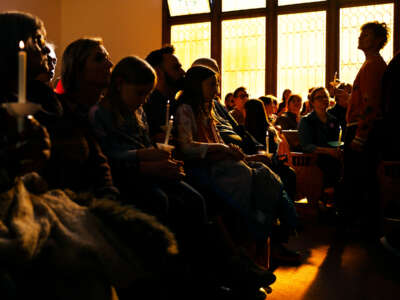
Tidings of Discomfort and Joy: Christmas as Resistance
Christmas offers an opportunity for those who celebrate it to recommit to the love and solidarity its story teaches.
By Amanda Udis-Kessler , TRUTHOUT
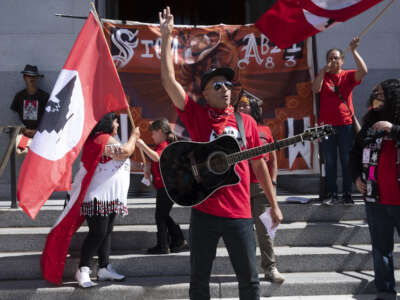
Organizers Are Rediscovering the Power of Song in Movement Building
Organizers are learning how song culture strengthens the capacity to create social change.
By Paul Engler , WAGINGNONVIOLENCE

Zionism Made Hanukkah About Israel, But It’s Always Been a Holiday of Diaspora
Forget Maccabean militarism. In this age of climate crisis, let’s talk about the miracle of burning less oil.
By Elliot Kukla , TRUTHOUT

Free Speech Watchdogs Condemn Elon Musk for Suspending Journalists From Twitter
Twitter’s CEO is facing backlash from press freedom and civil liberties groups over the decision.
By Jake Johnson , COMMONDREAMS
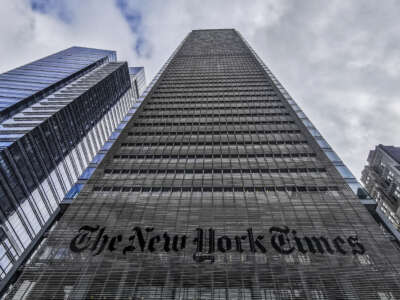
How New York Times Fear-Mongering Helped Republicans Win the House
The paper told America that rising crime and worsening inflation were driven by Democrats. None of it was true.
By Paul Rosenberg , SALON



